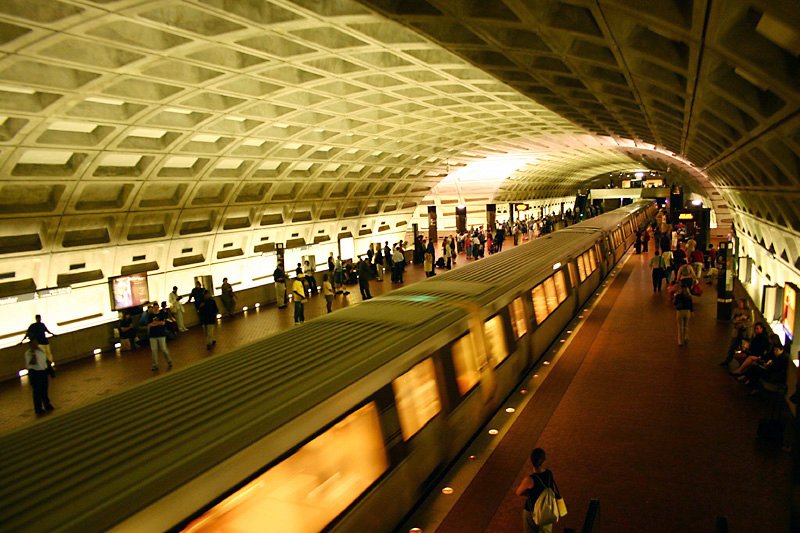Over the next 8 years, suburban Virginia will spend over $4 billion to extend Washington's Metrorail system 23 miles to Dulles airport through Tyson's Corner, a major shopping and business district.
There has been very strong public support for the project and as a big project is a settled local political matter, but of course there has been lots of dickering over the details. One of these details is whether to put the subway extension above ground or below ground in the Tyson's Corner portion of the extension. In order to obtain about $1 billion for the project from the federal government, local officials decided that the extension would be above-ground. The federal government generally is hostile to heavy rail -- it's full of diesel bus "rapid transit" lovers. It was hard enough to get the federal government to contribute anything to the project at all. In fine American tradition, this morning a group calling itself tysonstunnel.org has filed suit against the federal government to force the project below ground. It is unknown if and how long the suit will delay the project.
By way of background, Metrorail is one of the two subway systems in the United States that has a critical mass and works -- NYC's being the other. About half of Metrorail's 106 miles is below ground (mostly in the city of DC) and about half above ground (mostly in the suburbs). Tyson's Corner is moving toward being a dense city with skyscrapers and everything, which is creating the move toward underground.
Here is an example of station below ground at Metro Center.

Attached is an example of station above ground at Silver Spring (Maryland suburbs).
How do these things work in your neighborhood and who makes the decisions? Do you think underground is worth the extra construction costs?
There has been very strong public support for the project and as a big project is a settled local political matter, but of course there has been lots of dickering over the details. One of these details is whether to put the subway extension above ground or below ground in the Tyson's Corner portion of the extension. In order to obtain about $1 billion for the project from the federal government, local officials decided that the extension would be above-ground. The federal government generally is hostile to heavy rail -- it's full of diesel bus "rapid transit" lovers. It was hard enough to get the federal government to contribute anything to the project at all. In fine American tradition, this morning a group calling itself tysonstunnel.org has filed suit against the federal government to force the project below ground. It is unknown if and how long the suit will delay the project.
By way of background, Metrorail is one of the two subway systems in the United States that has a critical mass and works -- NYC's being the other. About half of Metrorail's 106 miles is below ground (mostly in the city of DC) and about half above ground (mostly in the suburbs). Tyson's Corner is moving toward being a dense city with skyscrapers and everything, which is creating the move toward underground.
Here is an example of station below ground at Metro Center.

Attached is an example of station above ground at Silver Spring (Maryland suburbs).
How do these things work in your neighborhood and who makes the decisions? Do you think underground is worth the extra construction costs?


Comment